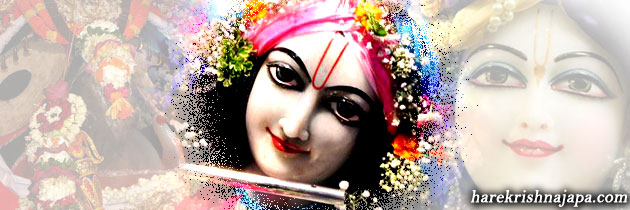WHAT DOES HARE RAMA MEANS

In whatever form one knows the Lord, one speaks of Him in that way. In this there is no falsity, since everything is possible in Krishna.
In this connection we may mention an incident that took place between two of our sannyasis while we were preaching the Hare Krishna maha-mantra in Hyderabad. One of them stated that "Hare Rama" refers to Sri Balarama, and the other protested that "Hare Rama" means Lord Rama. Ultimately the controversy came to me, and I gave the decision that if someone says that the "Rama" in "Hare Rama" is Lord Ramacandra and someone else says that the "Rama" in "Hare Rama" is Sri Balarama, both are correct because there is no difference between Sri Balarama and Lord Rama.
Here in Sri Caitanya-caritamrta we find that Krishnadasa Kaviraja Gosvami has stated the same conclusion:
yei yei rupe jane, sei taha kahe
sakala sambhave krishne, kichu mithya nahe
If someone calls Lord Ramacandra by the vibration Hare Rama, understanding it to mean "O Lord Ramacandra!" he is quite right. Similarly, if one says that Hare Rama means "O Sri Balarama!" he is also right. Those who are aware of the vishnu-tattva do not fight over all these details.
In the Laghu-bhagavatamrta Srila Rupa Gosvami has explained Krishna's being both KshirodakaSayi Vishnu and Narayana in the spiritual sky and expanding in the quadruple forms known as Vasudeva, Sankarshana, Pradyumna and Aniruddha. He has refuted the idea that Krishna is an incarnation of Narayana. Some devotees think that Narayana is the original Personality of Godhead and that Krishna is an incarnation. Even Sankaracarya, in his commentary on the Bhagavad-gita, has accepted Narayana as the transcendental Personality of Godhead who appeared as Krishna, the son of Devaki and Vasudeva. Therefore this matter may be difficult to understand. But the Gaudiya Vaishnava-sampradaya, headed by Rupa Gosvami, has established the principle of the Bhagavad-gita that everything emanates from Krishna, who says in the Bhagavad-gita, aham sarvasya prabhavah: (B.G.10:8) "I am the original source of everything." "Everything" includes Narayana. Therefore Rupa Gosvami, in his Laghu-bhagavatamrta, has established that Krishna, not Narayana, is the original Personality of Godhead.
In this connection he has quoted a verse from Srimad-Bhagavatam (3.2.15) that states:
sva-Santa-rupeshv itaraih svarupair
abhyardyamaneshv anukampitatma
paravareSo mahad-amSa-yukto
hy ajo ’pi jato bhagavan yathagnih
"When pure devotees of the Lord like Vasudeva are greatly disturbed by dangerous demons like Kamsa, Lord Krishna joins with all His pastime expansions, such as the Lord of Vaikuntha, and, although unborn, becomes manifest, just as fire becomes manifest by the friction of arani wood."
Arani wood is used to ignite a sacrificial fire without matches or any other flame. Just as fire appears from arani wood, the Supreme Lord appears when there is friction between devotees and nondevotees. When Krishna appears, He appears in full, including within Himself all His expansions, such as Narayana, Vasudeva, Sankarshana, Aniruddha and Pradyumna. Krishna is always integrated with His other incarnations, like Nrsimha-deva, Varaha, Vamana, Nara-Narayana, Hayagriva and Ajita. In Vrndavana Lord Krishna sometimes exhibits the functions of such incarnations.
In the Brahmanda Purana it is said, "The same Personality of Godhead who is known in Vaikuntha as the four-handed Narayana, the friend of all living entities, and in the milk ocean as the Lord of Svetadvipa, and who is the best of all purushas, appeared as the son of Nanda. In a fire there are many sparks of different dimensions; some of them are very big, and some are small. The small sparks are compared to the living entities, and the large sparks are compared to the Vishnu expansions of Lord Krishna. All the incarnations emanate from Krishna, and after the end of their pastimes they again merge with Krishna."
Therefore in the various Puranas Krishna is described sometimes as Narayana, sometimes as KshirodakaSayi Vishnu, sometimes as GarbhodakaSayi Vishnu and sometimes as Vaikunthanatha, the Lord of Vaikuntha. Because Krishna is always full, Mula-sankarshana is in Krishna, and since all incarnations are manifested from Mula-sankarshana, it should be understood that He can manifest different incarnations by His supreme will, even in the presence of Krishna. Great sages have therefore glorified the Lord by different names. Thus when the original person, the source of all incarnations, is sometimes described as an incarnation, there is no discrepancy.
(SRI CAITANYA CARITAMRTA——-1:5:132——–TRANSLATION AND PURPORT).





